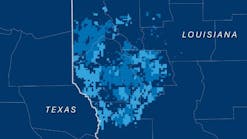Oil price outlook unchanged despite recent volatility, speakers say
While global crude oil markets’ underlying influences may have shifted greatly in the last 10 years, pricing fundamentals have not changed in the last 6 months, speakers agreed during a Mar. 30 discussion at the Center for Strategic & International Studies.
“Six months ago, when we assembled this same panel, we talked about what the market would look like,” said Frank A. Verrastro, CSIS senior vice-president and trustee fellow, who introduced the program. “We’ve seen bulls and bears in the market in the time since. The market has featured several different dynamics, but the outlook going forward hasn’t changed that much.”
Kevin Book, managing director at Clear View Energy Partners LLC and a nonresident senior associate in the CSIS energy and national security program, said, “We are looking back at 2016 and seeing 53% of US demand growth coming from gasoline. That’s a durable share and it will be interesting to see how long it lasts.”
Book said, “If you go back to 10 years and look at vehicle miles traveled and gasoline consumption, they moved more in tandem than they do now.” Book said there still is some of that consistency, but now the Top 10 US states are disproportionately represented in other demand metrics such as the number of driver’s licenses that they issue.
“Over 60 months, the Top 10 states’ consumption correlated tightly because of price,” Book said. “That makes it look elastic, but there also were impacts from vehicle fuel efficiency policies that were implemented during the Obama administration. It seemed that the US was going to relinquish its global lead in gasoline consumption, but the new administration has signaled policy changes that could slow this down.”
Another speaker noted that national policy changes overseas potentially could change one major country’s energy requirements in the years ahead. China’s energy demand closely tracked its gross domestic product growth for years as the government expanded the national transportation network largely with expanded air service, said Edward L. Morse, global head of commodities research at Citigroup.
“Now, it’s building more rail and road transportation between cities,” Morse said. “I would suggest that once the government begins connecting cities this way, diesel fuel demand could be huge. That could temper expectations that the world is moving into a period of lower demand.”
Morse also said the Organization of Petroleum Exporting Countries also apparently miscalculated in an effort to stabilize global crude prices after its members’ Sept. 30, 2016, agreement to reduce exports by 750,000 b/d of exports led to a 1.8 million b/d surge in purchases instead.
Most of this crude came from Saudi Arabia, the UAE, Russia, and Kuwait, he said. It was delivered during the first quarter largely into spare US storage capacity. “If you look at the growth or nongrowth of inventories in 2016, the market was balancing by itself,” Morse said. “Price stability is elusive. The Goldilocks price doesn’t exist.”
A third speaker suggested that official inventory numbers may not reflect the actual situation because transportation networks are growing so quickly that volumes in transit are bigger than before.
“When the market began to pay for storage, it grew to 71 days’ supply. There’s also 6 million bbl in transition from transportation and shipping,” said Albert Helmig, chief executive office at Grey House LLC and a former vice-chairman of the New York Mercantile Exchange.
“I don’t think we have as much coverage from an oversupply as many people think.”
Contact Nick Snow at [email protected].

Nick Snow
NICK SNOW covered oil and gas in Washington for more than 30 years. He worked in several capacities for The Oil Daily and was founding editor of Petroleum Finance Week before joining OGJ as its Washington correspondent in September 2005 and becoming its full-time Washington editor in October 2007. He retired from OGJ in January 2020.

